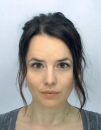Physics 2
Data is displayed for academic year: 2023./2024.
Lectures
Course Description
Kinematics and dynamics of rigid body rotation about fixed axis, and in rolling motion. Statics and dynamics of fluids. Viscosity. Kinetic theory of gases. Heat, laws of thermodynamics, thermodynamic processes. Schrödinger equation. Kronig–Penney model. Quantum statistics. Quantum theory of semiconductors. Electrical and magnetic properties of materials.
Study Programmes
University undergraduate
[FER3-EN] Electrical Engineering and Information Technology - study
(3. semester)
Learning Outcomes
- Apply calculus techniques (derivative, integration) to analysis of physical problems.
- Identify degrees of freedom of a rigid body.
- Calculate moments of inertia for simple bodies.
- Explain conditions for static equilibrium and the equation of motion for rotation of rigid body around a fixed axis.
- Apply the equation of continuity and Bernoulli equation to simple problems in fluid mechanics.
- Demonstrate the relationship between the microscopic and macroscopic variables in description of ideal gas.
- Use the first law of thermodynamics in the analysis of thermodynamic processes.
- Solve Schroedinger equation for 1D problems
- Explain structure of semiconductors and the origin of energy bands
- Explain electrical and magnetic properties of materials.
Forms of Teaching
Lectures
Lectures are delivered to student groups using electronic presentations, detailed derivations on the blackboard and demonstration experiments.
Partial e-learningAssignments through e-learning platform
LaboratoryStudent performed laboratory experiments
Grading Method
| Continuous Assessment | Exam | |||||
|---|---|---|---|---|---|---|
| Type | Threshold | Percent of Grade | Threshold | Percent of Grade | ||
| Laboratory Exercises | 5 % | 10 % | 5 % | 10 % | ||
| Homeworks | 0 % | 10 % | 0 % | 10 % | ||
| Mid Term Exam: Written | 0 % | 40 % | 0 % | |||
| Final Exam: Written | 0 % | 40 % | ||||
| Exam: Written | 0 % | 80 % | ||||
Comment:
In the mid-term exam and in the final exam one (of four) problem must be correctly solved. In the written exam two (of six) problems must be correctly completed.
Week by Week Schedule
- Rigid body as the system of particles. Statics of the rigid body. Moment of inertia of the rigid body
- Rotation around the fixed axis (kinetic energy and angular momentum), Equation of motion for the rotation around fixed axis, General motion of the rigid body (motion of CM with rotation around an axis)
- Fluid statics. Dynamics of the perfect fluid. Viscosity in fluids
- Heat; Temperature; Thermal equilibrium. Thermal expansion of solids and fluids. Pressure and the mean kinetic energy of a gas particle; Equation of state. Degrees of freedom of the molecule; Thermal capacities of gases. Maxwell distribution of particle velocities, Equipartition of energy and Maxwell-Boltzmann distribution
- Equation of state of the ideal gas, Calorimetry; Thermal capacities, Phase transitions. Latent heats. Isothermal, isobaric, isochoric and adiabatic processes; PV diagrams.
- Heat transport by convection, Heat transport by conduction; Fourier law; Heat flow in cylindrical and spherical symmetry, Heat transport by radiation; Black body; Stefan-Boltzmann law Work, heat and internal energy. First law of thermodynamics; Functions of state and of process. Thermal capacities at constant volume and at constant pressure; Mayer's relation
- Carnot process; Efficiency of the heat engine; Second law of thermodynamics, Inverse Carnot process; Efficiency of the heat pump and the refrigerator, Entropy; Carnot process in the TS diagram
- Midterm exam
- Wave-particle duality; Quantum mechanics: postulates, epistemology, derivation and solutions of the Schrödinger equation
- Properties and interpretation of wave function; Bound states and electron orbitals
- Fermi–Dirac distribution and its applications; Fermi energy; Fermi temperature; Fermi surface; Electron state density function;
- Free electron model; Kronig–Penney model; Bloch theorem; Brillouin zones; Metal conductivity
- Quantum theory of semiconductors; Intrinsic semiconductors and heterogeneous structures; Effective mass of electrons and holes; Experimental measurements of the effective mass
- Classical and quantum theory of polarization; Diamagnetism, paramagnetism and ferromagnetism
- Final exam
Literature
Dubravko Horvat (2005.), Fizika 1: Mehanika i toplina, Hinus
Dubravko Horvat (2011.), Fizika 2: titranje, valovi, elektromagnetizam, optika i uvod u modernu fiziku, Neodidacta, Zagreb
Vladimir Knapp, Petar Colić (1990.), Uvod u električna i magnetska svojstva materijala,
Vladimir Šips (1991.), Uvod u fiziku čvrstog stanja, Školska knjiga, Zagreb
M. Baće, L. Bistričić, D. Horvat, T. Petković (2011.), Riješeni primjeri i zadaci iz fizike materijala, Hinus
V. Henč-Bartolić, M. Baće, L. Bistričić, D. Horvat, P. Kulišić, Z. Narančić, T. Petković, D. Pevec (1996.), Riješeni zadaci iz mehanike i topline, Školska knjiga, zagreb
T. Petković, M. Baće (1991.), Zadaci iz fizike 3, Elektrotehnički fakultet - Zagreb
For students
General
ID 209729
Winter semester
6 ECTS
L1 English Level
L1 e-Learning
75 Lectures
0 Seminar
0 Exercises
6 Laboratory exercises
0 Project laboratory
0 Physical education excercises
Grading System
85 Excellent
70 Very Good
60 Good
50 Sufficient


 Pristupačnost
Pristupačnost

